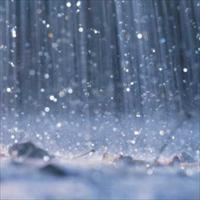ZIMBABWE: Rainwater harvesting eases shortage

Residents of Zimbabwe's second city, Bulawayo, are harvesting welcome rainwater from their roofs after consistently low rainfall in the past few years forced the city council to decommission all but one of its six reservoirs and impose rigorous water rationing.
"We had gone for almost 10 days without water because council supplies are only available once a week now," said Hlengiwe Ncedani, who had arranged a variety of receptacles under the roof of her three-roomed house in the working-class suburb of Mabutweni to collect rainwater.
Ncedani told IRIN that she and her three children had missed the last water ration, which took place at about midnight when most families were sleeping. "We can collect as much as 200 litres of potable water on a good rainy day, and this lessens the burden of scrounging for water," Ncedani said.
In Iminyela, another Bulawayo suburb, Euginia Mbondera also welcomed the rain, saying, "We can breathe a sigh of relief and hope the rains continue." She is caring for a brother-in-law infected with HIV/AIDS and said the family had been hard pressed to maintain the hygienic conditions crucial to his well-being.
Poor access to water has far-reaching implications for general health and hygiene, but is even more crucial in HIV/AIDS prevention and care. "It might take some time before council restores normal supplies as dams take time to fill up, given how dry it has been over the past months," Mbondera said.
Harnessing roofs
Lareto Nare, a researcher at Rainwater Harvesting Association of Zimbabwe, told IRIN there was great potential for rainwater harvesting from roofs in Bulawayo and it was a practice that council institutions should view seriously.
"Council schools and clinics that already have substantial roof surfaces could benefit a large community," Nare said. The council runs more than 30 clinics and an infectious diseases hospital, and there are at least 140 primary and secondary schools in and around the city.
Water experts surmise that a 100 sq m roof in an area with an annual rainfall of 600mm could collect as much as 36,000 litres of water, assuming the rain was collected on an impermeable surface without evaporation. This is about twice the annual requirement of a five-member family with an average daily drinking-water requirement of 10 litres per person.
When it rains it pours
While Bulawayo thirsts for more rain, Meteorological Services Department director Hector Chikoore said, "Most areas have recorded more rainfall than what they normally receive during the same period of the year. For instance, in Harare [the capital] we expect a seasonal rainfall of 800mm, but Harare has already recorded almost a quarter of the total in only seven days."
The state-run Herald newspaper reported that three people had died and one was missing after floods destroyed homes in northeastern Zimbabwe. According to the Civil Protection Unit, which coordinates emergency responses, about 1,000 people were displaced.
Meteorologists have warned of torrential rains and further flooding in other parts of the country during Zimbabwe's rainy season between November and April.
 Back and Next - Back and Next
Back and Next - Back and Next See Also - See Also
See Also - See Also